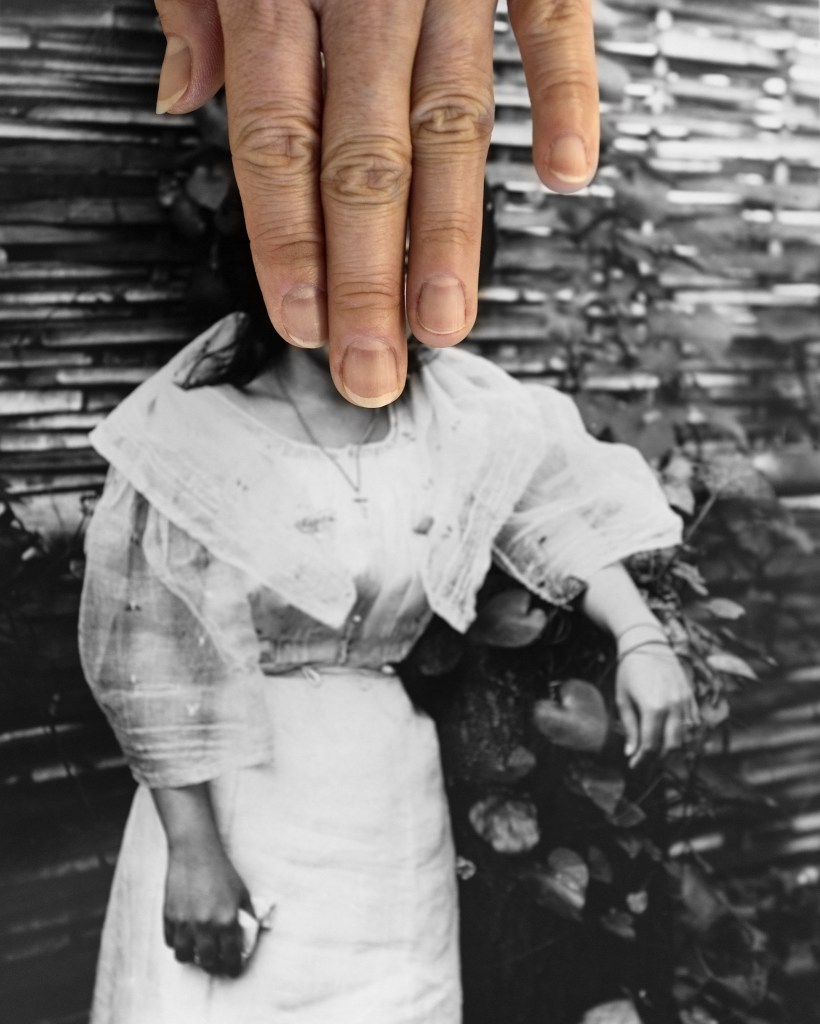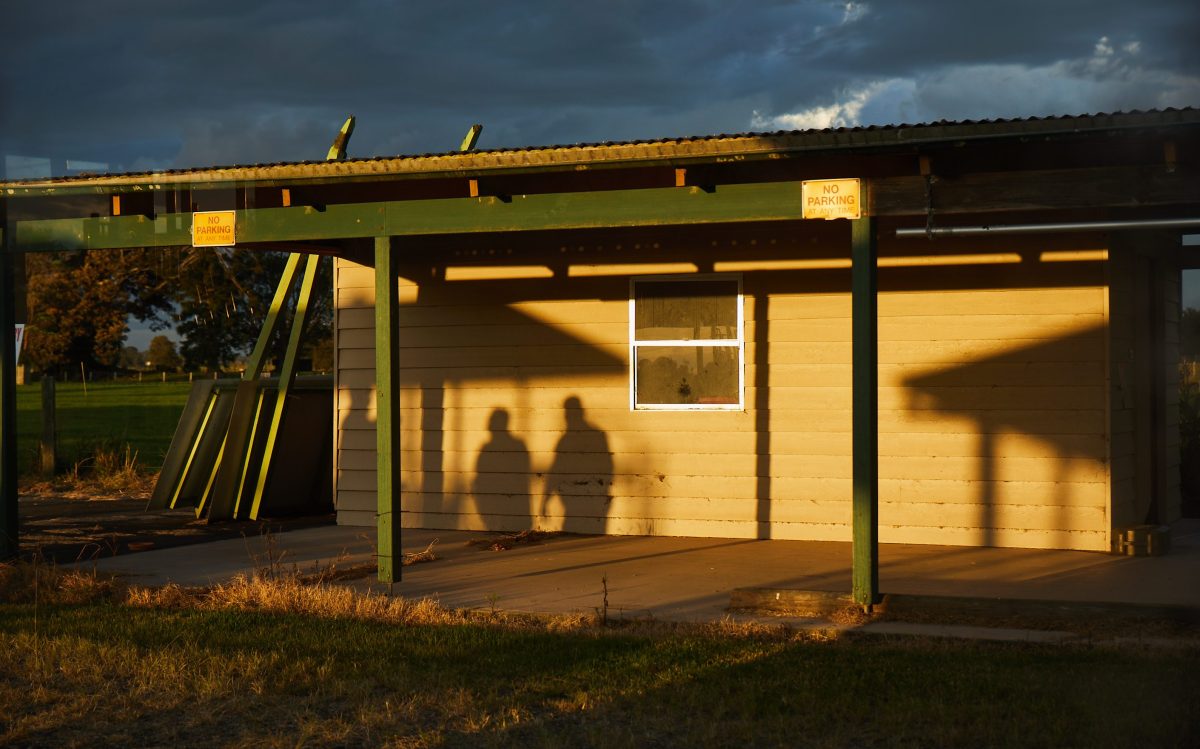In the Centre for Contemporary Photography’s (CCP) upcoming exhibition, Only the future revisits the past, five artists revisit archives, museum collections and family histories to speculate on alternative futures that subvert and reconfigure hegemonic narratives and representations of history. History is not retrospective but, instead, retroactively reconstructed.
Although we are often told to act in the present to change the future, rarely do we consider how re-analysing our interpretations of the past can alter and transform our collective futures, revealing how inextricably bound we are. With our fates and histories intertwined, our responsibilities are to not only each other, but our ancestors and future generations, weaving us into a widening tapestry.
In the aftermath of displacement and dispossession, the past continuously haunts the present and collapses linear notions of time. Each time we remember, we are changing not only the past, but the future too.
The exhibition will be presented as part of PHOTO 2024 International Festival of Photography (1-24 March). Catlin Langford, curator at CCP, explains its rationale. ‘In the wake of events like the global pandemic, we have largely looked towards the future as a possible answer or means of processing the present. Conversely, this exhibition brings together artists who, despite varied and unique approaches, are united in their examination of the past to consider and contemplate the future.’
Langford serendipitously gleaned the title of the exhibition from Ocean Vuong’s debut novel, On Earth We’re Briefly Gorgeous, in which he writes, ‘The monarchs that fly south will not make it back north. Each departure, then, is final. Only their children return; only the future revisits the past’.
Langford sees photography as a ‘multifaceted medium that has a profound impact on how we see and perceive ourselves and the world around us’. She continues, ‘Looking back at history and the archives is important for all artists to situate their creative practice within a tradition, but lately there has been more of a confrontation and reckoning.’
Recognising the limits of the archives and their role in maintaining hierarchies and perpetuating power dynamics is necessary in reclaiming the stories and voices that have been historically marginalised and erased.
As Susan Sontag wrote in her seminal essay ‘On Photography’, ‘Photographs give people an imaginary possession of a past that is unreal… After the event has ended, the picture will still exist, conferring on the event a kind of immortality.’
Herein lies the paradox of photographs. Although they signify something that has happened in the past, the subjects continue to live on by virtue of being photographed. This places them not exactly in the past or present, but somewhere in between, somewhere the future can’t help but continuously face towards.
Langford says, ‘As a specialist in photography, I am influenced by the fact that photography is a relatively new medium – introduced to the world in 1839 – and even more recently was accepted, generally, as an art form. Furthermore, photography is a slippery medium as it is an art form, but is also used in science, for documentary purposes, as evidence, to promote colonial agendas, in commercial practice, and for record keeping, be that family albums or everyday Instagram photographs.
‘One photograph could sit across these multiple uses, and can sometimes be used on the basis of this understanding: accepted as a truth or evidence, and therefore can be more easily adapted for propaganda purposes. I always keep these ideas in the back of my mind when curating, researching or lecturing, and I think this comes through in the exhibition.’
Delving into the exhibition
Photography is a medium that reproduces the power dynamics it represents. As Sontag wrote, ‘A photograph passes for incontrovertible truth that a given thing happened.’ The assumption that a photograph is a conduit for truth is precisely its great power. Although photography is the art form that most closely resembles what is commonly accepted as objective reality, it is no less invested in artifice with its implicit bias and skewed interpretation of the world, which the five artists – Marta Bogdańska, Omar Victor Diop, Nikki Lam, Tace Stevens and Stephanie Syjuco – interrogate and lay bare.

Langford says, ‘While it is a group exhibition, it has specific artworks that you can sit with for a long time and take in. Despite the artists’ different approaches, the works speak to each other. There are these little relationships between all the works – these threads that link them not just thematically, but aesthetically and conceptually too.’
Each separate part speaks to the larger whole, exploring legacies of colonisation and migration in relation to identity, opacity and agency.
A Filipino-American artist, Syjuco’s work Block out the sun looks back at the 1904 World’s Fair in St Louis. Famously known at the time as the largest “human zoo” in world history, this was an opportunity for the US, after acquiring new territories such as Guam, the Philippines and Puerto Rico, to parade their imperial conquests. The Fair included the exhibition of over 1100 Filipino people to showcase the new colony. Promoting their power and white supremacy, visitors could come and indulge their anthropological fetishisation of people deemed uncivilised and inferior.
The camera has historically been used as an exploitative tool for the empire, objectifying its subjects and privileging the coloniser’s perspectives. Syjuco makes interventions into the archives by placing her hands over individual’s faces, blocking them from being seen.
For those who have been made invisible, to actively choose to be illegible and opaque – not erased as an external imposition – is an act of self-determination. Syjuco simultaneously protects them through concealing their faces, while still bringing our attention to the existence of these images and their inherent violence. As Sontag wrote, ‘Photographs alter and enlargen our notion of what is worth looking at and what we have a right to observe. They are a grammar, and even more importantly, an ethics of seeing.’
Read: Through the queer lens
Noongar and Spinifex artist Stevens makes similar colonial interventions by returning to sites of colonial trauma. The Kinchela Boys Home was established in 1924 and is now known as one of the most abusive institutions of the Stolen Generations era, which saw an estimated 400 to 600 First Nations boys between the ages of five and 15 taken away from their families.
Stevens received a grant from the Magnum Foundation and World Monuments Fund to work with the Kinchela Boys Home Aboriginal Corporation, a survivor-led initiative, to document their stories through audio and photography. She juxtaposes these testimonies of systemic violence with the photographic propaganda of the boys appearing happy and looked after. This disjuncture highlights the ways in which photography can distort perceptions of truth and reality to further a colonial agenda.
Sharing her journey into photography, Stevens says, ‘Family photo albums were my first introduction to photography and storytelling. Storytelling was always at the core of what I loved to do.’ She was drawn to the medium because ‘it allowed me to see the world in a different way. It helped me express myself in a way that I hadn’t been able to do before’.
She continues, ‘My life experiences as a Noongar and Spinifex woman, and my responsibilities as a daughter, sister and aunty influence my creative practice. Film and photography have the power to heal, transform and educate. I want to be able to help others have that same experience.
‘Now that I’ve finished my studies, I have the skills and resources to help mob and community tell their stories with autonomy. I hope that my exhibition, and the stories shared from the Kinchela Boys, will engage with people’s hearts, and be a conversation starter. I hope that people will realise that the trauma and pain from these missions still has an impact on Aboriginal and Torres Strait Islander people and communities today.’
The power of art in changing perceptions
As part of Langford’s vision for the CCP, she emphasises that any visitor can attend free of charge. She believes in the ‘importance of accessibility, making galleries and the art they show open, engaging and experiential’.
‘I also believe in the importance of representing a range of voices, but also ensuring the artist’s voice is present in the gallery via interpretation as well as collaboration with them on the exhibition design.’
It is Langford’s priority that although the works are quite conceptual and draw on diverse histories, ‘anyone who’s interested should be able to comprehend what is shown’.
‘Whether that’s audiences from overseas – given histories around the Stolen Generation aren’t as well-known internationally – or audiences in Australia witnessing works exploring histories of America or Hong Kong,’ she adds. ‘The hope is they’ll learn about these historical legacies through the contemporary works.’
Langford concludes, ‘I hope that, on leaving the exhibition, people will have a greater awareness of not only needing to engage with the past, but to critically engage with the resources – be that photographs, films, documents, newspapers – that tell us about the past. To critically engage with that which has formulated and dictated how we think about the past and defined our worldviews can only help us engage with what we are being told about the now, the present, which may influence our futures.’
Only the future revisits the past is on view at Centre for Contemporary Photography as part of PHOTO2024 from 2 March (opening dance workshop with KWABO Festival) to 12 May with events throughout the exhibition period, including a day of truth-telling with the Kinchela Boys Home Aboriginal Corporation.
Artist floor talks with Omar Victor Diop, Nikki Lam and Tace Stevens will be held on 3 March.
This article is published under the Amplify Collective, an initiative supported by The Walkley Foundation and made possible through funding from the Meta Australian News Fund.





